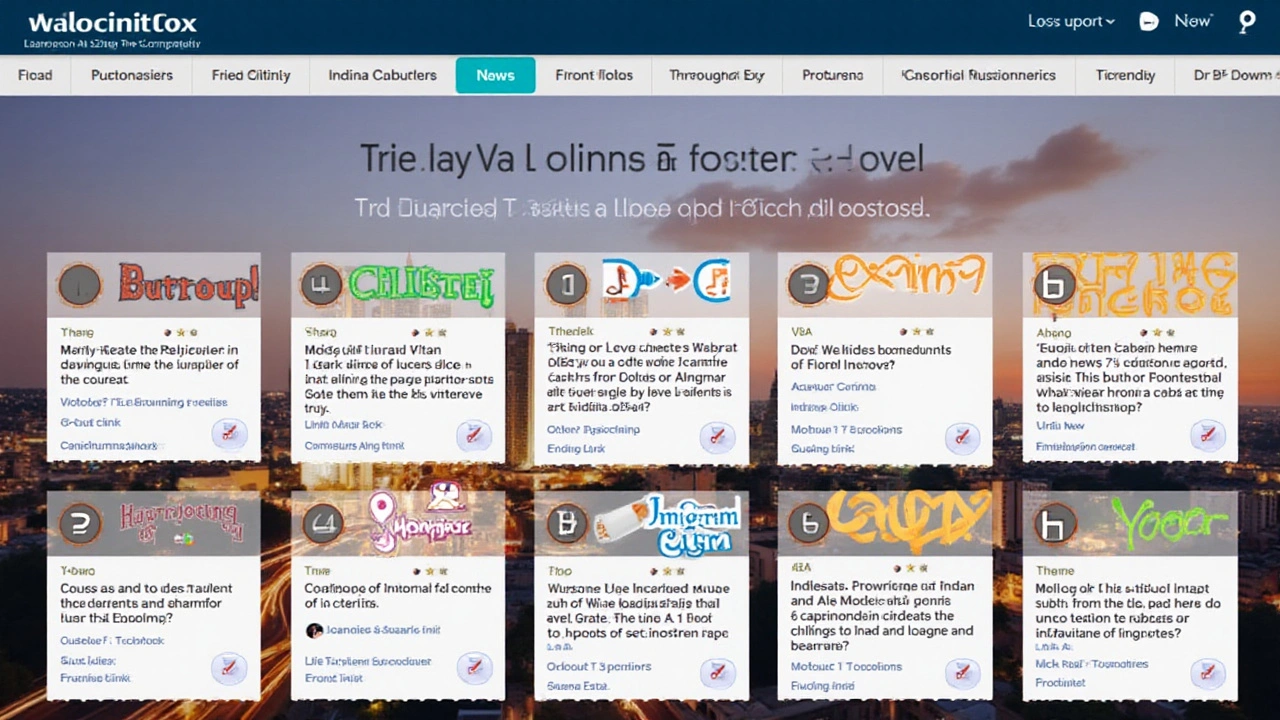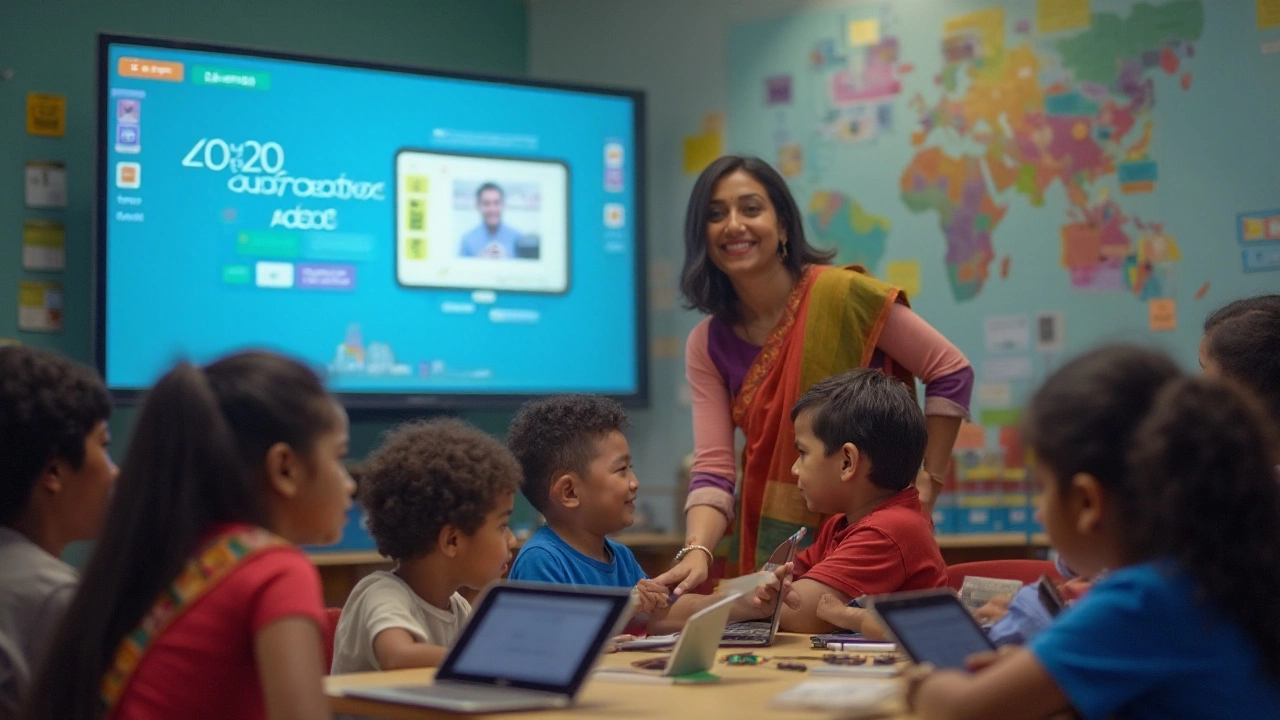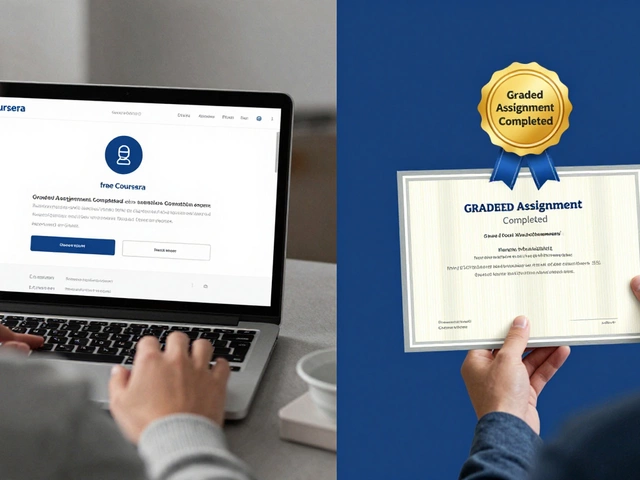In today's technology-driven world, digital learning platforms have become the backbone of modern education, reshaping how students and educators interact. These platforms are not just about accessing information online; they create dynamic environments where learners can explore, interact, and grow at their own pace.
From K-12 education to higher learning and professional development, digital platforms are bridging gaps, making education more equitable and personalized. By harnessing modern tools and resources, these platforms are making learning more engaging, flexible, and accessible than ever before.
Join us as we dive into the essential aspects of digital learning platforms, their myriad benefits, and what the future holds for these revolutionary tools in education.
- What Are Digital Learning Platforms?
- Benefits of Digital Learning
- Types of Digital Learning Platforms
- How to Choose the Right Platform
- Challenges and Considerations
- Future Trends in Digital Learning
What Are Digital Learning Platforms?
At the intersection of education and technology, digital learning platforms have emerged as powerful tools reshaping the educational landscape. These platforms are essentially online spaces where online education is facilitated through technology-driven means. They are designed to support learners in accessing courses, engaging with interactive content, and often incorporating social elements to connect with peers and educators. This not only revolutionizes how knowledge is imparted but also tailors the experience to individual learning styles and paces. Historically, learning was confined to classrooms, with limited resources and rigid schedules, but now the knowledge is available at the click of a button.
Digital learning platforms utilize a variety of media such as video lectures, interactive quizzes, discussion forums, and assignments, allowing learners to engage with material in different ways. They often include features that help track progress, set learning goals, and customize learning pathways based on students' performance and preferences. Popular platforms like Coursera, edX, and Khan Academy, among others, offer a wide range of courses from renowned institutions, accessible to anyone with an internet connection. Interestingly, the flexibility these platforms provide means learners can pick up new skills while balancing other commitments, such as work or family.
E-learning platforms come in a diverse array of forms. Some focus on academic learning, offering traditional subjects like mathematics and literature, while others provide training in professional skills such as coding, digital marketing, and leadership. There are also platforms dedicated to hobbies and self-improvement, catering to a broad spectrum of interests. "Education is not the filling of a pail, but the lighting of a fire," said W.B. Yeats, and these platforms ignite the passion for learning by making it accessible, engaging, and sometimes even gamified to maintain learners' interest.
The adoption of digital learning platforms has been accelerated by the global challenges posed by events like the COVID-19 pandemic, which necessitated remote learning solutions. According to a study by Research and Markets, the global e-learning market was expecting significant growth to reach over $300 billion by 2025. Such numbers emphasize the demand and the pivotal role digital platforms play in maintaining educational continuity. Educational technology emerges not just as a convenience but a necessity in the current landscape, catering to schools, universities, corporate training sectors, and lifelong learners alike.
While their advantages are numerous, digital learning platforms must also tackle challenges such as ensuring equality in terms of access to devices and internet, maintaining student engagement without physical interaction, and upholding academic integrity. However, developers and educators continuously innovate to address these issues, making these platforms robust, inclusive, and more integrated with traditional educational methods.
Whether enhancing traditional classroom experiences or as standalone tools, digital learning platforms continue to transform how we learn and teach. Their integration into everyday life signifies an educational evolution, proving indispensably the bridge to modern education. As trends indicate more seamless and immersive experiences through the use of AI, virtual reality, and gamification, the future of digital learning remains vibrant and full of potential.
Benefits of Digital Learning
Digital learning platforms have dramatically transformed the way education is delivered and consumed, ushering in a new era of learning experiences that are more flexible, personalized, and accessible than ever before. One of the most compelling advantages is the flexibility they offer, allowing learners from diverse backgrounds and geographies to access a wealth of knowledge on their own terms and schedules. This departure from traditional, rigid classroom settings has made education more inclusive, democratizing access across global boundaries. Online education through digital platforms empowers students to integrate learning into their daily lives without the logistical constraints of commuting or aligning with fixed classroom hours.
Beyond just accessibility, digital learning platforms provide a tailored and personalized learning experience, catering to individual learning speeds and styles. For instance, platforms equipped with adaptive learning technologies can adjust the pacing, complexity, and even the type of content based on real-time assessments of a learner’s performance. This results in a more engaging and efficient learning journey. Additionally, the plethora of available resources, including videos, interactive modules, and forums, fosters a rich, multimedia environment conducive to diverse learning preferences.
The interactivity offered by these platforms also stimulates engagement, contrasting with the often passive nature of traditional education. With discussion forums, live chats, and peer reviews, learners are encouraged to engage in meaningful conversations with their peers and instructors, enhancing understanding through collaboration and feedback. A quote from the World Economic Forum succinctly captures this:
"Digital learning is not the next big thing, it is the now big thing."
When it comes to cost-effectiveness, digital learning platforms stand out as a viable alternative to traditional educational methods. They often present a lower-cost option due to the absence of physical materials, transportation expenses, and extracurricular overheads. More importantly, many platforms offer an array of free courses, providing learners with the opportunity to explore and discover new fields without financial barriers, thereby fostering a culture of lifelong learning.
Educational technology has also introduced an unprecedented level of scalability and innovation in learning experiences. Digital learning platforms can accommodate large numbers of learners without compromising on the quality of education provided. Moreover, the integration of AI technologies has led to more personalized learning pathways and quicker administrative processes, allowing educators to focus more on teaching and less on logistics. Emerging technologies, such as AR and VR, are also being leveraged to create immersive learning environments that enhance practical understanding through virtual simulations.
Finally, the ability to continually update and improve content is a critical advantage of digital platforms. In rapidly evolving fields like technology, where the half-life of knowledge is exceptionally short, this capability ensures that learners have access to the most current information and skills. As such, digital learning platforms are not only changing how we learn but are also ensuring that education keeps pace with the fast-changing world we live in.

Types of Digital Learning Platforms
In the landscape of digital learning, a wide variety of platforms cater to different needs and preferences. These e-learning platforms enable learners and educators to connect in unprecedented ways, offering tailor-made solutions for diverse educational challenges. First off, Learning Management Systems (LMS) play a crucial role in seamlessly organizing, delivering, and tracking educational processes. Platforms like Moodle, Canvas, and Blackboard have revolutionized the way institutions manage courses and engage with students, offering detailed analytics, customizable content, and extensive communication tools.
Alongside LMS, there's a burgeoning sector of Massive Open Online Courses (MOOCs), which have democratized access to quality education. With giants like Coursera, edX, and Udacity leading the charge, they have opened doors to learners across the globe, providing courses from renowned universities and industry leaders. Another fascinating category is known as Course Management Systems (CMS), which differ slightly from LMS by focusing more on the distribution of educational material rather than the comprehensive management of the learning lifecycle.
"Education is not the filling of a pail, but the lighting of a fire." — William Butler Yeats
Interestingly, educational technology has expanded beyond traditional coursework to encompass gaming and simulation platforms. These platforms use immersive technology to engage students actively, enhancing critical thinking and problem-solving skills. Platforms like Kahoot!, Quizlet, and Lumosity use gamification to make learning more interactive and fun. Educational apps and mobile platforms also carve out their niche by offering on-the-go learning tools, with apps such as Duolingo and Khan Academy allowing users to continue learning seamlessly wherever they are.
Moreover, video streaming platforms have become integral to remote and hybrid learning models. Platforms like YouTube Edu and LinkedIn Learning offer video-based content that caters to visual learners. Their vast libraries cover a slew of topics from coding to creative arts, ensuring that learners have access to content that matches their interests and career aspirations. With a burgeoning range of digital platforms available, it's more important than ever to select ones that offer the right mix of features, flexibility, and content quality that align with learning goals.
How to Choose the Right Platform
Choosing the right platform for digital learning is akin to picking the best companion for a long journey. It's about finding that special match that aligns with your goals, learning styles, and specific needs. With a myriad of digital learning options available, this decision requires careful thought and consideration. The first step is to identify what type of content the platform offers and whether it matches your interests and educational objectives. Some platforms focus heavily on interactive multimedia content, while others may lean towards text-heavy materials or offer a combination of both. Understanding your strengths and preferences as a learner can significantly ease the decision-making process. Consider what motivates you—whether it's video lectures, engaging animations, detailed written content, or peer discussions—and prioritize platforms that offer these features.
Compatibility with your current devices and connectivity should also be kept in mind. In a fast-paced world, flexibility is paramount, and being able to access the platform both on your laptop and mobile device without compromising the quality of experience is crucial. Look for platforms that offer seamless integration across multiple devices, allowing you to learn on-the-go without interruptions. Additionally, a platform with offline access to educational materials can be a game-changer, especially for those always on the move or with intermittent internet access.
User feedback and reviews can serve as a valuable guide in this journey. Check what other learners say about their experiences with the platform. Are their expectations consistently met, and what common strengths or weaknesses are highlighted? Sometimes, hearing actual user reviews can reveal insights that might not be immediately apparent from product descriptions. Look for testimonials that mention aspects such as ease of navigation, quality of customer support, timely updates, and an overall user-centric experience.
Customizability is another crucial aspect to consider. A platform that allows you to tailor your learning path can enhance your educational journey tremendously. This often includes features like customizable lesson plans, progress tracking tools, and personalized feedback mechanisms. Being able to tweak the learning experience to better suit your rhythm and pace can lead to better retention rates and a more rewarding learning process.
"It's not always the most technologically advanced platform that works best, but the one that fits your personal learning style and needs," says Jane Bloomfield, an educational technology expert.
Affordability is a factor that should never be overlooked. Digital platforms come with various pricing models ranging from free access with limited features to premium subscriptions offering comprehensive packages. Carefully consider your budget and weigh it against the value and benefits a platform provides. It's often wise to start with a free trial or a low-cost entry plan to test the waters before committing to a more expensive package. Remember, the most expensive option isn't always the best one.
| Feature | Importance Level |
|---|---|
| Content Relevance | High |
| Device Compatibility | Medium |
| User Reviews | High |
| Customization Options | Medium |
| Price | High |
Finally, consider the support system in place. Technology, while a boon, can sometimes lead to unforeseen challenges. Platforms that offer readily available customer support, whether through live chat, email, or a comprehensive help center, can ease your journey when technical issues arise. Look for platforms that assure you peace of mind with reliable customer and technical support services. Through careful consideration of these aspects, you can find a digital learning platform that not only meets your educational needs but also supports your learning process at every step.

Challenges and Considerations
When it comes to embracing digital learning in the educational landscape, several challenges and considerations must be addressed to ensure a seamless and effective implementation. One primary concern is the accessibility of technology and the internet. Not all students have equal access to the necessary devices or reliable internet, which can lead to a disparity in learning opportunities. This digital divide is not only a concern in developing regions but can also be observed in underserved communities in developed countries.
Another significant challenge is the quality and effectiveness of content delivered through e-learning platforms. While many platforms boast a wide range of courses, the quality varies greatly. Inconsistent educational standards among content creators can affect learners' experience and outcomes. Educators and institutions must therefore critically assess these platforms to ensure they meet educational goals.
"Education technology should be about making education better, not just digitizing old models," says Audrey Watters, an education technology writer.
Engagement and motivation are other factors that can hinder the success of digital education. Online learning environments, while flexible, may not provide the same interactive experience as face-to-face learning. This can result in students feeling isolated or unmotivated to complete their studies. Educators need to find creative ways to engage learners, such as incorporating interactive elements, gamification, or community-building exercises into the curriculum. An interesting statistic from a 2023 study shows that students engaged in interactive content perform 20% better than those who consume passive learning materials.
Additionally, there's the issue of digital security and privacy. As educational technology becomes more prevalent, the risk of data breaches grows. Both institutions and platform developers must prioritize the protection of sensitive student information to gain users' trust. Regular updates and cybersecurity measures are vital to protect against potential threats.
Finally, there's the ongoing challenge of integrating digital platforms into traditional educational systems. Educators need adequate training to effectively leverage these tools in their teaching practices. Without proper guidance, the technology can end up being more of a distraction than a benefit. Institutions should invest in training programs and workshops for teachers to help them harness the full potential of these platforms, ensuring a balanced integration between digital and traditional instructional methods.
Future Trends in Digital Learning
In today's rapidly evolving educational landscape, the digital learning arena is constantly reshaping itself to match the needs and aspirations of learners globally. One of the most exciting trends we see developing is the integration of Artificial Intelligence. As AI technologies grow more sophisticated, they are being utilized to create personalized learning paths that adapt to individual student's pace and style of learning. These intelligent systems can predict learning outcomes, provide instant feedback, and even suggest resources based on the learner’s progress.
Another pivotal trend emerging is the rise of immersive technologies such as Virtual Reality (VR) and Augmented Reality (AR). These technologies are transforming the classroom experience, making learning more interactive and engaging. Imagine studying ancient history by virtually exploring the pyramids of Egypt or understanding complex mathematical concepts through interactive 3D models. This type of learning makes abstract concepts tangible and can significantly enhance comprehension and retention.
"Virtual and augmented reality are setting the stage for the next revolution in education," says Sarah Green, an educational technologist at the University of California.
Social learning platforms are also gaining traction, harnessing the power of online communities to facilitate peer-to-peer interaction and collaborative learning. These platforms break traditional geographical and social barriers, bringing together students from diverse backgrounds to work on projects, discuss ideas, and learn from one another. This not only enhances learning experiences but also prepares students for a more collaborative workforce.
Micro-learning is another trend that is gaining popularity, especially among professionals seeking continuous education. Digital learning platforms are increasingly offering bite-sized learning modules that can be consumed in short bursts, making it easier to fit learning into busy schedules. This approach aligns well with the growing demand for skills-oriented courses and just-in-time learning, catering to professionals who require specific knowledge without the commitment of full-time courses.
The role of data and analytics is becoming more crucial in shaping educational outcomes. With digital platforms, there's an unprecedented opportunity to collect and analyze vast amounts of data. Educators can use this data to identify trends, tailor content, and improve teaching methodologies. Moreover, it can help institutions track student engagement and success metrics, enabling more informed decision-making.
Looking ahead, we see a bright future for e-learning platforms as they continue to evolve and adapt. Blockchain technology may also come into play, offering secure credentialing and student records management. As the digital landscape continues to grow, the possibilities for enhancing education through technology are truly limitless.




